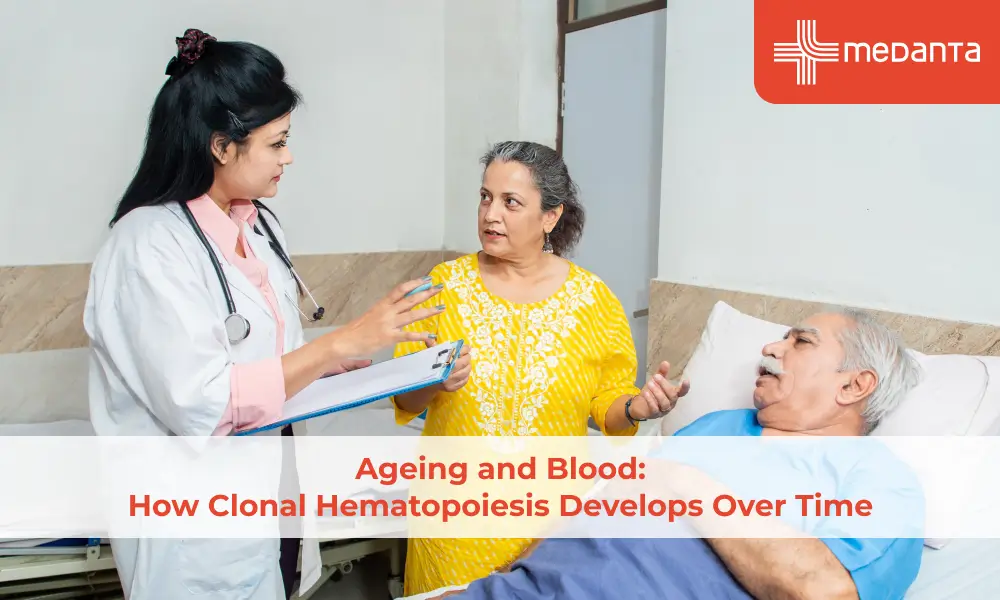THE EXCHANGE | Newsletter January 2022

Management of Spinal Deformity in Kids and Adults
Scoliosis is a lateral deviation of the spine. These complex abnormalities are polyaxial and involve components of angulation, partial subluxation and rotational deformities of multiple vertebral joints. These deformities affect all age groups as the causes vary from developmental to idiopathic to degenerative. Some of these deformities are also associated with inflammatory joint disease and infections. Correction of these deformities involves complex algorithms and has been traditionally known to have high complication rates. Surgical treatment is the only option available for majority of cases. The approach to these deformities differs from patient to patient depending on the patient’s age, severity and rigidity of the curve, presence of intraspinal conditions, and general condition of the patient including pulmonary function. Deformity correction protocols at Medanta Institute of Musculoskeletal Disorders and Orthopaedics involve preoperative planning, templating, simulation of correction, 3-D templating for implant positioning, intraoperative navigation with O-Arm and neuromonitoring for monitoring spinal function. Special considerations for anesthesia include mapping of pulmonary function and assessment of blood loss with intraoperative autotransfusion.
Our team of doctors at Medanta have a high success rate while performing these uniquely complicated surgeries. Our anesthesia and intensive care teams are geared to deal with the most difficult conditions.
Case Studies
Congenital Scoliosis in an 8-year-old girl
The patient presented with rapidly progressive back deformity. Her parents were advised observation when they first noticed her deformity. They consulted a spine specialist at Medanta when the deformity and angulation increased.
Her X-rays and MRI showed hemivertebra at L1 with a left sided thoracolumbar curve. The spinal cord was normal on MRI. Doctors decided to carry out excision of hemivertebra with correction of the spinal deformity and a short segment fusion. The surgery was successful with gratifying clinical and radiological results.
Idiopathic Dorsal Scoliosis in a 12-year-old girl
The patient presented with a progressive back deformity. The curve seemed to progress rapidly when she developed asymmetry of the shoulders. She was a normal active adolescent with a right sided medium grade dorsal curve, well compensated with shoulder asymmetry Surgery was planned and full exposure was done from D2 to D12. Pedicle screws were inserted, and a gradual correction of the curve was done under neuromonitoring.
Full correction of the curve was achieved. Rods were placed and posterior fusion was done.
Degenerative Scoliosis in a 76-year-old woman
The patient presented with a painful lumbar curve with marked radicular pain in her right leg. She had claudication and was barely able to walk for more than 20 steps. Her MRI showed severe degenerative changes at the mid lumbar level with a short lumbar curve, apex at L2L3, severe facet joint arthropathy and marked lumbar canal stenosis. Surgery was carried out with a posterior approach. Pedicle screw placement was done under fluoroscopic vision and posterior ponte type osteotomies were done. Laminectomy was done at L23 to relieve pressure over the spinal contents and posterior fusion was done. Full correction of the lumbar curve was achieved with decompression of the neural elements. The patient had quick relief of symptoms. On her last follow up, she could walk comfortably for about
1 km and only experienced mild occasional back pain. Such patients need to be monitored carefully in the post operative period for adjacent level disc degeneration. Osteoporosis, and severe arthritic changes in a stiff lumbar spine presents technical challenges to the correction of this common and neglected condition. The results were gratifying.
Medanta@Work
Orthodontic Treatment with Clear Aligners
Orthodontics majorly deal with diagnosis, prevention, and correction of mal-positioned teeth and jaws, and misaligned bite patterns. Some of the conditions that require orthodontic intervention are:
Difficulty biting or painful biting: Misalignment of the teeth may cause disordered eating like pain on biting into hard foods and cheek/tongue biting during chewing.
Inconsistent or excessive gaps in teeth: Excessive gaps in the teeth can increase the risk for tooth decay, jaw misalignment, and eating difficulties. Food may easily get trapped in the gaps, causing gum irritation and pain.
Crooked or crowded teeth: Malocclusion (crooked or crowded teeth) needs orthodontic treatment to create more space and realign the bite. Crowding causes inefficient oral hygiene, increasing the risk of tooth decay and gum disease.
Pain or clicking in the jaw: This may happen because of tooth misalignment and can be significantly lessened by straightening out the teeth and correcting the bite.
Protruding teeth: Protruding teeth puts an individual at high-risk for a dental injury. Teeth that aren’t protected by the lips can easily be knocked out during an accidental fall.
Traditionally, metal braces have been the only treatment to straighten teeth and while they are effective, they are also visually awkward. However, now there is a new solution to straighten teeth without braces by using a series of clear, removable Aligners.
Clear Aligners
Clear Aligners are a series of transparent, removable trays made of medically tested harmless plastic (BPAfree plastic) which are used to straighten teeth just like conventional braces. They fit snugly over teeth, and use gentle and right amount of pressure to move the teeth in the desired position without the hassle of heavy metal wires and brackets. They are customized for each patient according to the original position of the teeth and patient’s requirements. Clear aligners are practically invisible, and can be taken off to brush, floss, eat and drink.
Aligners are created by taking an Intraoral 3D scan (digital mould) of the patient’s teeth. The treatment plan along with patient records including the scan, jaw X-rays and photographs are used to create a customized treatment plan. The smart technology predicts the movement of teeth during treatment to make a better fitting flexible tray. This technology combined with custom engineered
aligner features and the treatment plan of an experienced Orthodontist allows patients to get the straight teeth they want without the hassle of braces. The aligners are 3D printed, based on the digital treatment plan and are sequentially changed every 7-10 days in a pre-determined manner to progressively move teeth into the desired position.
The virtual computerized outcomes predict the duration of the treatment and the final results. Aligners are a great advancement in the orthodontic world and patients regularly undergo this procedure at Medanta Department of Dental Sciences.
Benefits of Aligners Over Braces
Comfort: Aligners are easier to wear than braces.
Invisible: Aligners are clear and barely visible.
Convenience: Fewer follow-up visits to the Orthodontist are required.
Removable: Aligners can be removed for eating, brushing and flossing. There are no dietary restrictions and better oral hygiene, which reduces risk of developing gum disease (often seen during braces).
Minimal maintenance:Aligners require minimal maintenance unlike braces which require stringent oral hygiene protocols.
Treating complex cases of malocclusion using Aligners
- A 12-year-old female with protrusion and crowding of upper front teeth was treated with clear aligners and extraction of two upper premolar teeth. Treatment duration was 14 months.
- An 18-year-old female with severe protrusion of upper front teeth was treated with clear aligners and extraction of four premolar teeth. Treatment duration was 18 months.
- A 35-year-old adult patient with severe crowding and protrusion of upper front teeth was treated with extraction of two upper premolar teeth and clear aligners.
Dr. Tapasya Juneja Kapoor
Visiting Consultant
Institute of Dental Sciences
Medanta – Gurugram
Welcome Onboard
JAY PRABHA MEDANTA SUPER SPECIALITY HOSPITAL, PATNA
Dr. Sanjay Kumar
Director Cardiothoracic and Vascular Surgery
Surgeon with expertise in adult & pediatric cardiac surgeries, beating heart surgery, aortic &
endovascular surgery, heart failure surgery, MICS and ECMO. Pioneered endovascular aortic surgery in Jharkhand






